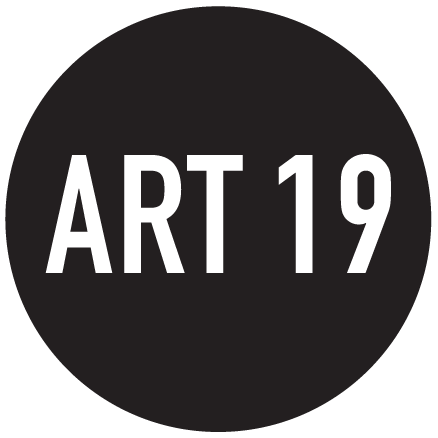The Art Newspaper : Tate Modern show celebrates Yoko Ono’s rebirth after decades of derision (by Andrew Pulver)
Exhibition will look at the significance of the artist’s career before and after her famed relationship with John Lennon
Yoko Ono photographed with her work Glass Hammer (1967)Lisson Gallery; London; 1967. Photo © Clay Perry
Yoko Ono may well be the world’s most famous living artist, even if it was not necessarily her art that put her there. It is hard to look past her sudden elevation to global fame—and consequent notoriety—as a result of her meeting John Lennon. The couple’s all-consuming, near obsessive relationship following their encounter in 1966 at a London exhibition of her work marked her out to The Beatles’ mass following—inaccurately—as the band’s malign destroyer.
Ono’s previous identity as a significant figure in US and Japanese avant-garde circles—notably her association with the interdisciplinary Fluxus grouping—made little difference. But in the decades since Lennon’s murder in 1980, Ono has reclaimed her artistic identity as well as that of a cultural titan—the latest example of which is Music of the Mind, a large-scale career survey at Tate Modern this month.
Opening a few days before Ono’s 91st birthday, Music of the Mind will range back to Ono’s early career in the 1960s—well before she entered Lennon’s orbit—exploring a period of participatory work that included the infamous Cut Piece, in which Ono’s clothes were snipped off by her audience, and Bag Piece, in which she performed inside a large black bag. The Tate show’s co-curator Juliet Bingham stresses that a key aim is to highlight that Ono was, artistically speaking, fully formed by the time she crossed paths with The Beatles.
Ono performing Cut Piece in 1965, where members of the public were invited to cut the artist’s clothes offPhoto: © Minoru Niizuma; © the artist
“We want to show that, by the time she reached London, she was already really embedded in lots of different scenes and at the centre of the avant-garde in New York and Tokyo,” Bingham says. “She came to London at the invitation of [the German artist] Gustav Metzger; she performed Cut Piece and was only one of two women performing at the Destruction in Art Symposium. What happened when she met Lennon [was that] what she was doing was amplified, and also went into a different realm. It became a media circus—she was vilified: misogyny, racism. And some of her practice was subsumed underneath this larger media situation.”
Bingham is at pains to point out the sheer profusion of Ono’s work: from quixotic, experimental films and music she made before, during and after her time with Lennon, to the “instructional” pieces that were seeded by her 1964 book Grapefruit, and the more elaborate anti-war stunts in the late 1960s and 1970s, through to paintings, bronzes and participatory works such as the message collection projects Wish Tree and My Mummy Was Beautiful. A new version of the latter, which invites visitors to share memories of their mothers, will be on show at Tate Modern. “There are two strands of her work that are directing our exhibition: the collaborative works through her fine art practice, but also music, and then the participatory invitation for people to enter her work on lots of different levels,” Bingham says.
A page from Ono’s 1964 book Grapefruit. The conceptual work contained pages of musical scores that viewers were invited to perform.Courtesy of the artist
Probably the most startling evidence of Ono’s pre-Lennon life is the nine-minute film (shot by the celebrated US documentary makers Albert and David Maysles) of her 1965 New York performance of Cut Piece, which the Tate will be showing. The conceptual work seems to have fiercely relevant points to make about feminism and power, even if they may not have been all that clear at the time. “It’s interesting in relation to the [Marina] Abramović show [recently on at the Royal Academy of Arts in London], to see the different ways in which these very different artists explored the idea of the body and breaking down barriers,” Bingham says. “Cut Piece is as much about the performer as it is about the audience.”
Bingham says Ono’s enthusiasm and relevance remain undiminished, pointing to the 2013 song and performance piece Bad Dancer. “It’s so provocative in the way that she puts herself out there. It’s wonderful that she’s wearing hot pants, and she’s 80. She’s dancing with all of these other celebrities and comedians, and it’s very funny and tongue in cheek.”
The curator adds: “what’s amazing is the way that people see and approach her work, and how its meaning has changed over time. It changes over the decades because we bring a different context to it.”
Yoko Ono: Music of the Mind, Tate Modern, London, 15 February-1 September 2024.
Article published on https://www.theartnewspaper.com



